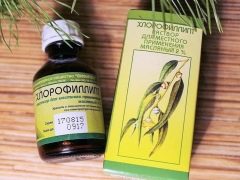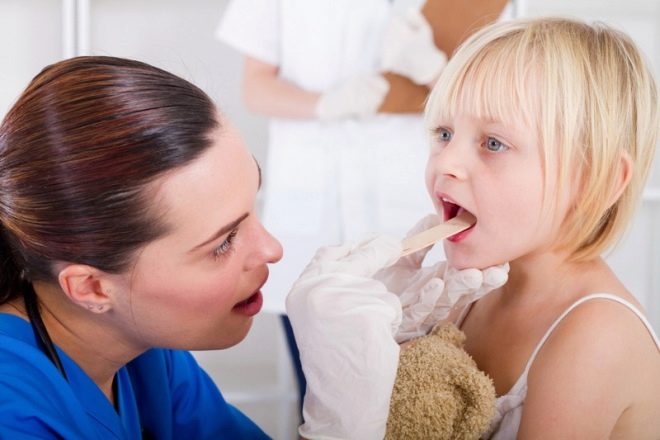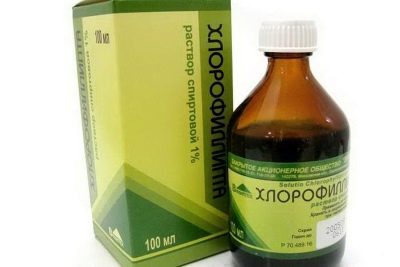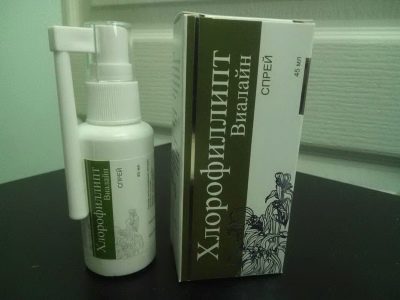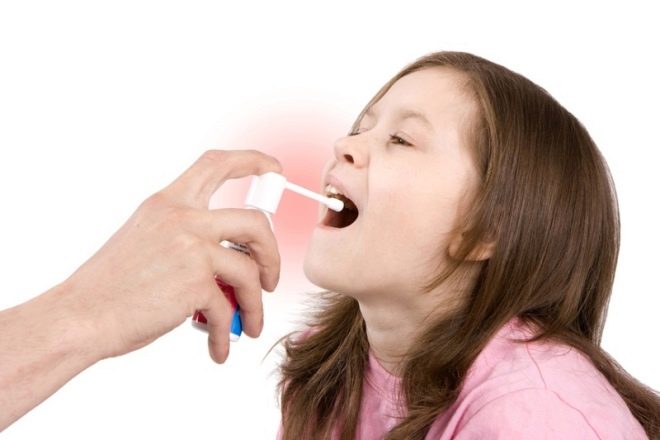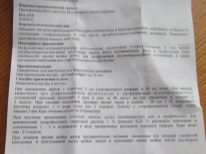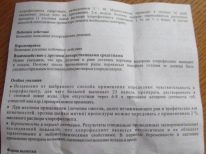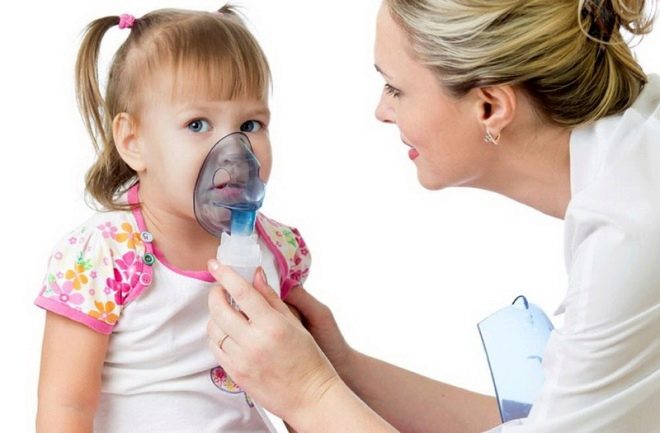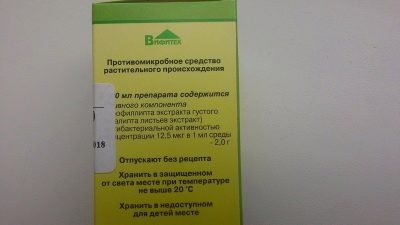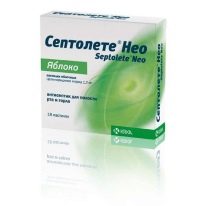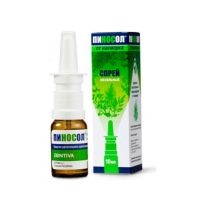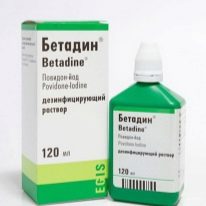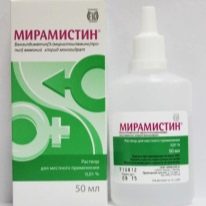Chlorophyllipt for children: instructions for use
"Chlorophyllipt" is one of the most popular drugs used for angina, stomatitis, burns and other diseases. The reasons for the popularity of such a drug in childhood can be called a good therapeutic effect, a vegetable base and a small number of contraindications. The drug is often prescribed by pediatricians, ENTs, dermatologists, surgeons and other doctors, because the range of its use is very wide. But in order to use "Chlorophyllipt" really was a benefit, parents should learn more about its effect on the children's organism, how to use it in children and the possible harm of such a medicine.
Release form and composition
The drug is produced in such dosage forms.
- Alcohol based solution. This "Chlorophyllipt" has a concentration of 1% and as the main ingredient contains an extract from the leaves of the plant, which is called spherical eucalyptus. The remainder of the solution is 96% ethyl alcohol. The medicine itself is clear, green in color and is sold in glass bottles in a volume of 25 ml, 50 ml or 100 ml.
- Oil solution. It is thicker (with an oily texture) and more concentrated (contains 2% extract of eucalyptus leaves), but also transparent and dark green in color. Such "Chlorophyllipt" is sold in glass bottles of 20 or 30 ml. Its only auxiliary component is vegetable oil, which is usually sunflower oil, but may also be corn oil.
- Pills. This solid version of "Chlorophyllipt" has a green color, a round shape and a characteristic aroma. Such tablets are designed for resorption. They are packaged in blisters of ten pieces and sold for 20, 30 or 50 tablets in one pack. Each tablet contains 25 mg of eucalyptus extract, supplemented with MCC, sugar, citric acid and calcium stearate.
- Spray. Such “Chlorofillipt” from some manufacturers is very convenient to spray onto the skin surface or mucous membrane, since there is a special device on the bottle (the dispenser is put on before using the medicine). The volume of solution in one package is 15 or 45 ml. In its composition there is an extract of eucalyptus, to which is added glycerin, polysorbate and other auxiliary ingredients.
Spray "Vialayn" also includes other plant extracts for a stronger anti-inflammatory effect on the mucous membrane. They are obtained from Hypericum, wormwood, nettle and Dubrovnik.
Operating principle
The eucalyptus extract, which is in all forms of "Chlorophyllipt", has an antimicrobial and antiseptic effect. It contains many minerals, chlorophylls, phytoncides, essential oils and other compounds that help destroy harmful microorganisms. This extract is especially effective against staphylococci. It can even affect strains of such bacteria that do not die under the action of the most common antibiotics.
When treating the throat, “Chlorophyllipt” reduces pain, eliminates redness and swelling, helps reduce cough and other symptoms of inflammation. When lubricating the skin, the agent also promotes faster healing of minor injuries and wounds.
How old is allowed?
The use of liquid forms of "Chlorofillipt" for external treatment is possible at any age. In this case, the use of an oil or alcohol solution for the treatment of mucous membranes or inside at an early age is permissible only as prescribed by a doctor. The instructions for tablets contain up to 18 years in the list of contraindications; however, in practice, this type of “Chlorophyllipt” is sometimes prescribed for schoolchildren and teenagers.
Annotation to the spray also notes that young patients have no experience of using this form, so the irrigation of the throat in babies is possible only after an examination by a doctor. In fact, “Chlorofillipt” spray is often prescribed to patients 2-6 years of age, since at this age it is difficult for children to gargle and it is very convenient to process the tonsils and arms with spray.
Indications
The reason to use "Chlorophyllipt" in childhood is:
- treatment of the umbilical wound in a newborn baby;
- topical treatment of prickly heat, abrasions, scratches, insect bites, burns and other minor skin lesions;
- treatment of rhinitis and cough for colds, adenoids and ARVI;
- treatment of wounds with stomatitis or gum disease;
- throat treatment for pharyngitis, sore throat or laryngitis;
- detection of staphylococci in the intestine.
Contraindications
All types of "Chlorofillipta" may not be used for hypersensitivity to eucalyptus or any auxiliary component of the selected drug. Treatment with tablets is also contraindicated for fructose intolerance, sucrose deficiency and some other disorders of carbohydrate metabolism.
Side effects
Since there is an extract from the plant as part of the medicine, “Chlorophyllipt” can provoke skin redness, rash, swelling and other allergy symptoms. In order to prevent such a negative reaction to the drug, the use of "Chlorophyllipt" in children should be initiated with a test for sensitivity. It consists in lubricating a small area with a solution or in ingesting a few drops of “chlorophyllipt” in oil. After a few hours, it is assessed if an allergy has manifested itself. In the absence of local or general reaction, the agent can be further applied as prescribed by the doctor.
Instructions for use
Treatment with Chlorofillipt of the umbilical wound is carried out 2 times a day - the product is applied during hygiene procedures in the morning and after bathing in the evening. First, hydrogen peroxide is dripped onto the navel (this helps to eliminate the crusts), and then smeared with an alcoholic solution “Chlorophyllipt”, using a cotton swab.
If the cause of the use of "Chlorophyllipt" is damage or inflammation of the skin, the tool is also applied topically. To do this, you can use a medicine containing alcohol, diluting it with saline or water. After wetting a cotton pad with diluted “Chlorofillipt”, the affected skin is rubbed 2-4 times a day. When using a spray, a little solution is sprayed onto a gauze swab, and then an application of the affected area is done for 15–20 minutes twice a day.
If “Chlorofillipt” is prescribed for a sore throat or another throat disease, then the drug can be used in different ways depending on its form.
- Alcohol solution often used for rinsing. The procedure is performed three times or four times a day. Usually for her take a teaspoon "Chlorophyllipt" and a glass of water, but sometimes other proportions. It is important to remember that you should gargle after a meal.
- Oil solution used to lubricate the inflamed areas. Manipulation is carried out using a cotton flagellum moistened in solution. If it is difficult for a child to withstand such treatment, you can drip a little “Chlorophyllipt” in the oil into the mouth, because this means will also fall on the shell of the throat. The frequency of this application of the solution - 2 times a day, and after using for at least 30 minutes you can not drink or eat anything.
- "Chlorophyllipt" tablets can dissolve. This should be done slowly, and biting or chewing the drug is not recommended.This solid form of the drug is used every 4-5 hours or at another interval, which is checked with the doctor.
- Spray spray on the throat tissue. To do this, the nozzle is directed to the inflamed area and double-click on the valve. Irrigation is performed 1-4 times a day, and after that at least 20 minutes you can not eat and drink.
- Sometimes the doctor prescribes and inhalation. To carry out such procedures in a nebulizer, you should only take an alcohol solution in an amount of 1 ml. 10 ml of saline solution is added to it and 3 ml of the diluted preparation is taken for one inhalation. Breathing "Chlorophyllipt" takes 5-10 minutes, and the number of procedures is determined by the doctor, but often they are done 2 or 3 times during the day.
For stomatitis and gingivitis, an oil-based drug is applied pointwise, that is, only in places of inflammation. If the doctor has prescribed drip oil "Chlorofillipt" into the nose, then this procedure is performed after cleaning, for which saline is first dropped into the nose, and then the mucus is removed with an aspirator. The drug is used in the dosage, which selects the ENT.
With intestinal staphylococcus affection and in other cases when it is necessary to take the medicine orally, the drug with an oil base should be diluted with water, and for infants you can take human milk or a mixture. It should be given to the baby to drink before meals (approximately 30-40 minutes before feeding) in an individually selected dose. If necessary, the doctor will also prescribe a medical enema.
Terms of sale
All forms of "chlorophyllipt" are sold in pharmacies as over-the-counter drugs, and their cost depends on the amount of the drug and its type. For example, a bottle of alcohol solution containing 100 ml of medicine costs 300 rubles, the price of Vialain spray or 20 ml of oil solution costs about 200 rubles, and the cost of 20 tablets is about 100 rubles.
Storage conditions
At home, "Chlorophyllipt" is stored at room temperature. In this case, the packaging of the medicine should be in a place hidden from children. The shelf life of the drug is usually 2 years (sometimes 3 years) and is marked on the package. It must be checked before starting treatment in order not to accidentally use an expired drug.
Reviews
In most reviews of Chlorophyllipt, such a drug is praised for its availability, effective action, and natural plant base. The advantages of the spray also include ease of use, but many mothers do not like the presence of a large number of auxiliary components. Among the other disadvantages of drugs are usually called a high risk of an allergic reaction and not very pleasant taste.
Analogs
If you need to find a replacement for “Chlorophyllipt” in case of throat diseases, the doctor will recommend another local antiseptic, for example, “Tantum Verde», «Miramistin», «Lugol», «Hexasprey" or "Hexoral". They are represented by rinsing solutions or sprays, but if desired, they can be replaced with lozenges or tablets, for example, with drugs "Lizobact" or "Septolete". If a child has pharyngitis, runny nose or sinusitis, “Chlorophyllipt” can be replaced.Pinosol», «Kameton», «Sinupret"," Evkaseptom "and other drugs with a similar therapeutic effect.
To lubricate the umbilical wound in babies after birth, instead of "Chlorophyllipt" can be tincture of calendula, "Brilliant green" and similar means. If you need an analogue for wounds, scratches, chicken pox and other skin damage, you can use "Betadine», «Miramistin"," Zindol ", a solution of iodine and other antiseptics for external processing.
How to do inhalation with chlorophyllipt, see the following video.
